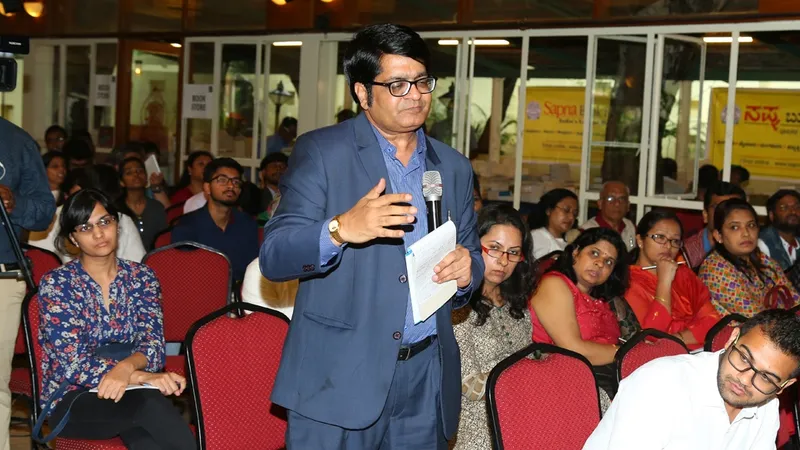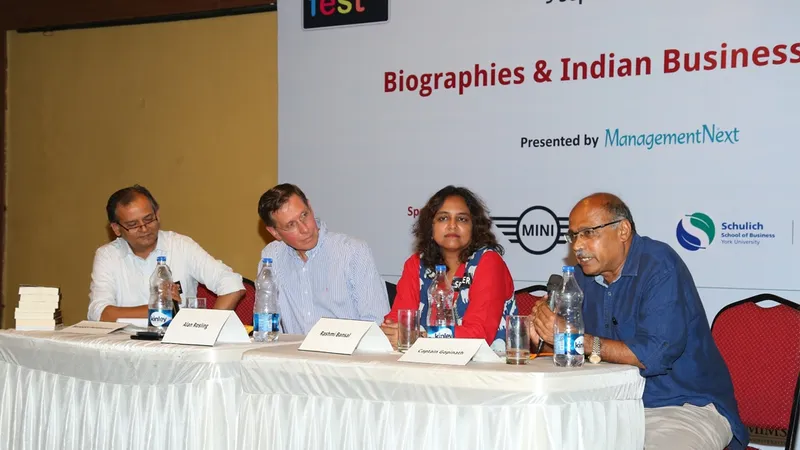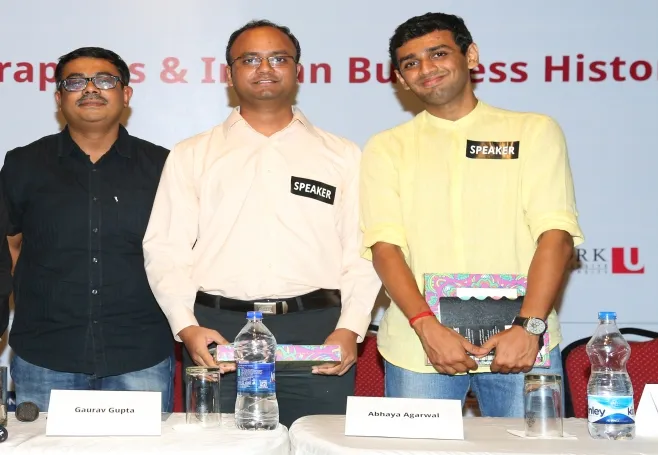‘India is being transformed for the better by entrepreneurship’ — Bangalore Business LitFest 2017
In the third article on the annual Bangalore Business Literature Festival (BBLF), we look at entrepreneur case studies, new forms of narrative, and evolution of business practices in India.

The Bangalore Business Literature Festival 2017 had a range of insightful panel discussions on entrepreneur stories, business trends in media, and digital publishing startups (see our earlier articles: Founder Stories and Learning from startup successes and failures).
Authors, academics and media professionals such as Rashmi Bansal, Alan Rosling, Captain Gopinath, Prof. PD Jose and K. Vaitheeswaran discussed the rise of entrepreneurship in India. As panel moderator, here are my three clusters of takeaways from BBLF 2017.
Traditional business communities, new business models
“Eighty percent of e-commerce in India is owned by Bansals,” joked Rashmi Bansal, author of a series of books on Indian entrepreneurs, such as I Have a Dream (see book review here). But the fact of the matter is that business and trade are very much in the culture of Baniya communities (e.g. Agarwals, Mittals, Goyals, Jindals).
Management education and work experience abroad has led many of them to set up professional organisations rather than family-operated companies. Business skills and careers are now being adopted by larger sections of society, and wealth creation is becoming respected and accepted, observed Rashmi.
Her most recent book is God's Own Kitchen: The Inspiring Story of Akshaya Patra - A Social Enterprise Run by Monks and CEOs. Entrepreneurship is a seed, but it takes a while to attain success – merely adding more fertiliser doesn’t make crops grow faster, she cautioned. This is particularly true in the social sector, where social enterprises take a long time to stabilise.
“India is being transformed for the better by entrepreneurship,” said Alan Rosling, author of Boom Country? The New Wave of Business Enterprise. It is easier now to set up a business in India than ever before.
Social attitudes towards entrepreneurs have improved, and there is a growing sense of opportunity. However, India often shoots itself in the foot repeatedly, as can be seen in many government and industry blunders, Alan lamented.

More attention needs to focus on entrepreneurship in the farming sector, said Captain Gopinath, serial entrepreneur and author of Simply Fly. “Making farming viable is the most important challenge in India today,” he said. Gopinath himself has had experiences in farming, aviation, politics, and in the army.
Reinterpreting failure
“Success seduces but failure reduces,” observed P.D. Jose, professor at IIM Bangalore. Failure is seen as reducing one’s standing in society, particularly in India. Management schools are acknowledging that ways of dealing with failure should be taught, since failure is a part of life in the world of business. Not all managers are good entrepreneurs, and not all entrepreneurs are good managers – the gap needs to be bridged.
Success itself is fleeting, and economic cycles and changing trends can cause successful business leaders to fail later on. “The only permanence is impermanence,” Jose observed, joking that even business guru Michael Porter’s strategy consulting firm Monitor Group had to shut down.
“Behind every successful person there are many failures,” said K. Vaitheeswaran, who has documented the failure story of his e-commerce venture IndiaPlaza in the book Failing to Succeed: The Story of India’s First E-commerce Company (see my book review).
Many successful athletes and sportsmen have experienced failures but keep improving their performance, such as Federer and Tendulkar. “Success is very rare. Those who fail increase the value of those who succeed,” said Vaitheeswaran.
Success can also lead to over-confidence, blind spots, or inflexible habits. Bill Gates has cautioned that success can seduce entrepreneurs into thinking they can’t do wrong. Failure teaches you to ask the right questions, according to Vaitheeswaran. But experiencing failure is tough; he recalled how heartbreaking it was to recount and pen his story of failure.
Indian attitudes towards failure need to change, he urged – business failure tends to be blamed on the wrongdoing of one person, who is vilified or ostracised. “Failure is an essential part of success, and those who have tried but failed should be able to proudly say that they have failed,” said Vaitheeswaran. Twitter’s ‘Blue Whale’ image when the site is down is often cited as a way of acknowledging failure with a sense of humour.
Digital startups
Three startup founders addressed digital media trends in publishing and reading: Vignesh Ramaswamy (multilingual content community Tartl), Gaurav Gupta (BookHook app for summaries of books), and Abhaya Agarwal (Pothi self-publishing platform).

Reading habits in India have not changed, but the type and form have changed, thanks to the rise of digital publishing and smartphones. There are two types of reading: skimming and diving, the panellists joked.
Skimming or snack-reading on smartphones has increased dramatically. Attention span is decreasing, and ‘fear of missing out’ (FOMO) is increasing. This leads to opportunities for curators, influencers and content creators who can connect, summarise, contextualise and review existing content.
Digital tools are speeding up the workflow in the publishing industry, and enabling broader reach to smaller towns and cities where large bookstores do not exist. The digital model also allows publishers to test reader demand in advance, through content previews.
The popularity of short form narratives is increasing, spurring new kinds of creativity. Short form also gives a new lease of life for long-form content. Storification tools allow creation of larger narratives from blogs and tweets.
Romanised text for Indian language content is popular, and there are big opportunities for content publishing in Indian language fonts. Design aids for visualisation of information can increase richness of content.
Trends to watch include the rise of AI in the publishing industry (see also my review of the book The Inevitable: Understanding the 12 Technological Forces that will Shape our Future by Kevin Kelley). For example, audio books can leverage AI by having authors read out only one page of their book as a training sample — the full reading can then be generated automatically.
Amazon is in a unique position to track not just how many books are downloaded, but also how many are actually read on Kindle, and which sections of the book receive the most attention or annotation. It is very difficult for print publishers to get this kind of real-time data, according to the panellists.
Other sessions at BBLF addressed entrepreneur education, business history, biographies of tycoons, and writing for social impact. We look forward to the next annual edition of BBLF already, with its combination of insightful panels, inspiring keynotes, and exhibition of business titles.








![[YS Exclusive] Darwinbox names CTO Vineet Singh as Co-founder](https://images.yourstory.com/cs/2/fe056c90507811eea8de27f99b086345/Imageva9v-1724937351419.jpg?mode=crop&crop=faces&ar=1%3A1&format=auto&w=1920&q=75)